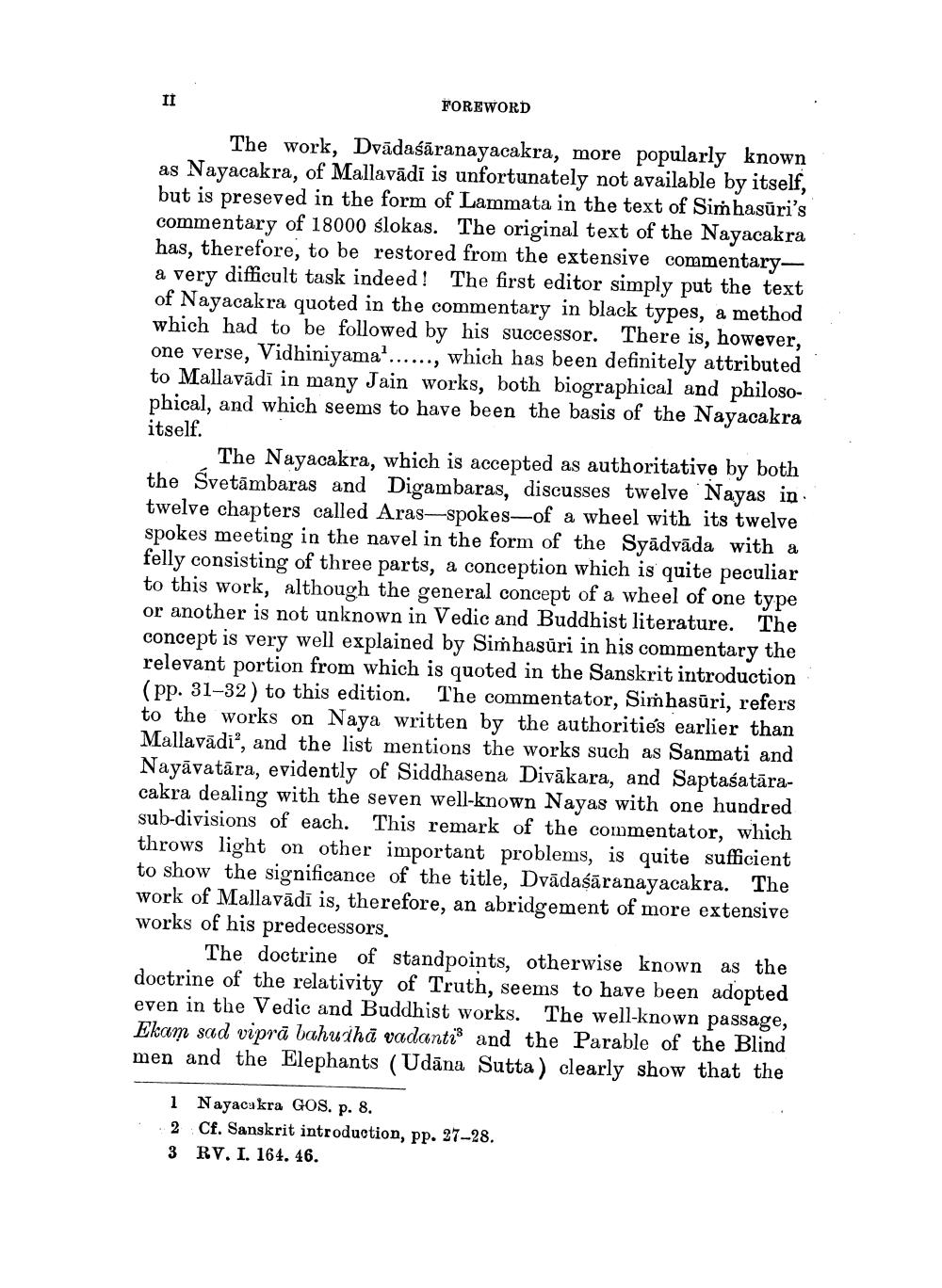________________ FOREWORD The work, Dvadasaranayacakra, more popularly known as Nayacakra, of Mallavadi is unfortunately not available by itself, but is preseved in the form of Lammata in the text of Simhasuri's commentary of 18000 slokas. The original text of the Nayacakra has, therefore, to be restored from the extensive commentarya very difficult task indeed! The first editor simply put the text of Nayacakra quoted in the commentary in black types, a method which had to be followed by his successor. There is, however, one verse, Vidhiniyama'......, which has been definitely attributed to Mallavadi in many Jain works, both biographical and philosophical, and which seems to have been the basis of the Nayacakra itself. The Nayacakra, which is accepted as authoritative by both the Svetambaras and Digambaras, discusses twelve Nayas in twelve chapters called Aras-spokes-of a wheel with its twelve spokes meeting in the navel in the form of the Syadvada with a felly consisting of three parts, a conception which is quite peculiar to this work, although the general concept of a wheel of one type or another is not unknown in Vedic and Buddhist literature. The concept is very well explained by Simhasuri in his commentary the relevant portion from which is quoted in the Sanskrit introduction (pp. 31-32) to this edition. The commentator, Simhasuri, refers to the works on Naya written by the authorities earlier than Mallavadi, and the list mentions the works such as Sanmati and Nayavatara, evidently of Siddhasena Divakara, and Saptasataracakra dealing with the seven well-known Nayas with one hundred sub-divisions of each. This remark of the commentator, which throws light on other important problems, is quite sufficient to show the significance of the title, Dvadasaranayacakra. The work of Mallavadi is, therefore, an abridgement of more extensive works of his predecessors. The doctrine of standpoints, otherwise known as the doctrine of the relativity of Truth, seems to have been adopted even in the Vedic and Buddhist works. The well-known passage, Ekam sad vipra bahuiha vadantis and the Parable of the Blind men and the Elephants (Udana Sutta) clearly show that the 1 Nayacakra GOS. p. 8. 2 Cf. Sanskrit introduction, pp. 27-28. 3 RV. I. 164. 46.




